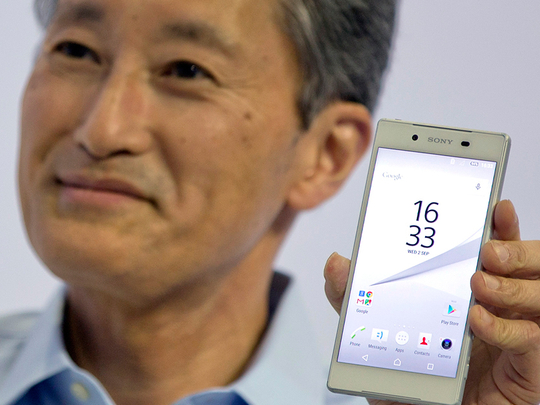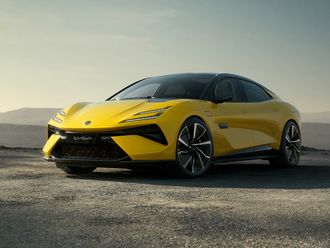
DUBAI: Sony is trying to stay ahead of the crowd by unveiling the world’s first smartphone with an ultra-high definition display (4K) display — Xperia Z5 Premium Dual.
The Japanese giant also launched two other models — Xperia Z5 Dual and Xperia Z5 Compact — at IFA, Berlin, which runs until Wednesday.
With these launches, the firm is gearing up to take on Apple and Samsung in the premium phone sector.
The three phones look almost identical, but come in different sizes and with differing features.
The 4.6-inch Z5 Compact, 5.2-inch Xperia Z5 Dual and 5.5-inch Xperia Z5 Premium Dual are powered by 64 bit Qualcomm Snapdragon 810 octa-core processor with 1/2.3 Exmor RS 23MP sensor and f/2.0 G lens.
In terms of resolution, the Xperia Z5 Compact comes with a 720p display, the Z5 is Full HD (1920x1080), and the Z5 Premium has (2160x3840) pixels.
At 806 pixels per inch density, the Z5 Premium display is obviously the highest display resolution in the market and beats Samsung S6’s 577 pixels per inch. Both the two larger models include 3GB RAM while the compact has 2GB. All three have a side-mounted integrated fingerprint sensor power button.
Research firm IHS Technology expects the new smartphones to have limited effect on Sony’s overall shipments in the short term.
Xperia Z5 Dual and Z5 Compact will launch globally in mid-October, and Xperia Z5 Premium Dual in mid-November.
IHS forecasts Sony will ship 27 million smartphones in 2015, compared with 40 million in 2014.
However, Ian Fogg, director of mobile analysis at IHS, said that Sony’s goal of improving profitability in preference to unit shipment volumes will be supported by these high quality flagship models because margins are higher in the premium segment.
While Sony seeks to visibly differentiate its new range with the 4K display on the Z5 Premium, this threatens to overshadow the more significant improvements to the range, which will be of more benefit to more consumers.
IHS sees the resolution differences between the Z5 and the Z5 premium to be harder for consumers to see because of the limited content and the small screen size. This will make it much harder for Sony to sell the Z5 Premium at the higher price.
“Today, 4K content will be extremely sparse for the Z5 Premium, which will make it hard for Sony to market this model product at a higher price than rivals with lower resolution displays. Globally, there are just eight UHD TV channels available anywhere and there is little 4K content too,” he said.
The most widely available on demand streaming service, Netflix’s 4K offer, includes just a handful of TV programmes — six TV shows, four documentaries, and ten films in 4K quality in total. But Netflix’s mobile app will initially not offer 4K video streaming on the Z5 Premium making this content irrelevant to Sony’s smartphone.
He said that Sony may also bundle 4K movie downloads as part of marketing incentives in conjunction with mobile operators. This will leverage the 200GB micro SD capacity of the Z5 Premium.
Smartphone makers with the capability to use their own chips — Huawei, Apple and Samsung — have enjoyed an advantage in 2015 because of Qualcomm’s weak Snapdragon 810.
LG experienced issues with the eight core 810-based Flex 2 at the start of the year and as a result switched to using a lower capability six core 808 for its G4 flagship in the second quarter.
If Sony can overcome the weaknesses of the 810 chip set, Fogg expects the new Z5 models to boost the appeal of the Sony brand, and hence help support margins into 2016.












